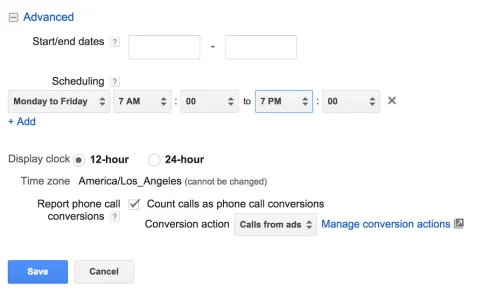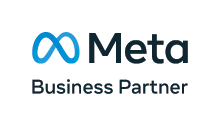Last year, Google launched a new option in AdWords: call-only campaigns. It allows advertisers to reach customers by showing a phone number, an ad description and, most importantly, a click-to-call button.
These campaigns have a great potential to reach new customers, especially for advertisers who only seek calls as leads. In fact, according to Google, around 70% of people searching on mobile will call a business directly from the search results.
Get more calls to your business with our Pay Per Call services
Here are seven things you need to know about this feature.
1. Choose The Right Campaign For Your Business Goals
Call-only campaigns are completely different from call extension ads. Whilst the latter simply allows a telephone number to be extended onto a regular ad, call-only ads do not allow the user to click onto the advertiser’s website. By choosing this option, advertisers avoid having to attach call extensions to each ad group and can instead control the feature at the campaign level.
As the image below shows, by using click-to-call campaigns you can completely bypass the landing page and connect with prospects directly via the phone, removing a whole step from the conversion funnel:
Remember, this option is only for businesses who rely on phone leads! If you want to drive website traffic, form fills, or downloads, avoid call-only campaigns and simply add a call extension to your regular text ad.
2. Target Call-Centric Keywords
Since call-only ads don’t let people click through to your website, your keywords need to target people with high intent, i.e. who want to take immediate action without research. Make sure you use keywords that appeal to the segment of your audience with the highest likelihood of calling, for example, location-based keywords with geo-targeting for customers looking to visit your business.
3. Hone your Bidding Strategy (CPCs can be very high)
Sometimes searchers confused by the ad format might click on your ad, even if they did not intend to make a call at this stage. To avoid paying out through the nose for these clicks, there is now an option called ‘Create a new Maximise clicks strategy’, which you can use to select the maximum amount you’re willing to pay for a phone call. This should be relatively easy to determine if you know what your conversion rate from call leads is.
Another useful bidding strategy is to use conversion optimiser and enhanced CPC bidding to optimise for call likelihood. Since every click goes towards a phone call, call-only campaigns also allow you to design a bidding strategy based specifically on CPA or ROAS (return on advertising spending) goals for calls, to ensure you stay profitable.
4. Analyse Click-Through Vs Call-Through Rates
Once someone clicks a call-only ad a popup dialler appears on the phone screen, which must also be clicked to make the call. Analyse the data discrepancy between these two clicks, figure out how many clicks actually result in phone calls and optimise your bids based on clicks versus calls.
A large disparity between the two figures or a high call abandon rate could mean your audience does not want to call and you might need to rethink your keyword strategy or your ad copy.
5. Schedule Your Ads To Only Show During Business Hours
The last thing you want to do is pay for clicks when your call centre isn’t even open! Remember, that if you select “maximize for clicks” (the recommended setting for call-only campaigns) you won’t be able to control when your ads are shown.
What you should do instead is use a manual bidding CPC strategy and limit your call-only campaigns to only run during business hours. You should also look at peak call times/days and adjust your bids to ensure your ads appear more often during those times.
6. Remarket to Callers Using Customer Match
Callers tend to be highly-engaged prospects, so are a perfect fit for retargeting. Although you obviously can’t put a tracking tag on a phone call, if you have the email addresses of those who did not turn into a sale, you can upload this list using Customer Match to your RLSA (remarketing lists for search ads) and other retargeting campaigns.
7. Track Calls and Measure Quality with Google Forwarding Numbers
Volume of calls is not necessarily a sufficient metric to look at when trying to optimise bidding or calculate ROI. What percentage of these calls actually ended up in a sale? It’s therefore always worth keeping track of the outcome of a phone call and analysing which type of calls are actually turning into customers.
Google forwarding numbers are uniquely generated phone numbers that allow you to report on the calls you receive through call-only ads. With this feature installed you get to see details like call duration, call start and end time, whether the call was connected, and the caller’s area code. Once you understand quality, you should be able to better optimise your bids to improve the quality of traffic, rather than quantity (which may actually be causing negative ROI).










